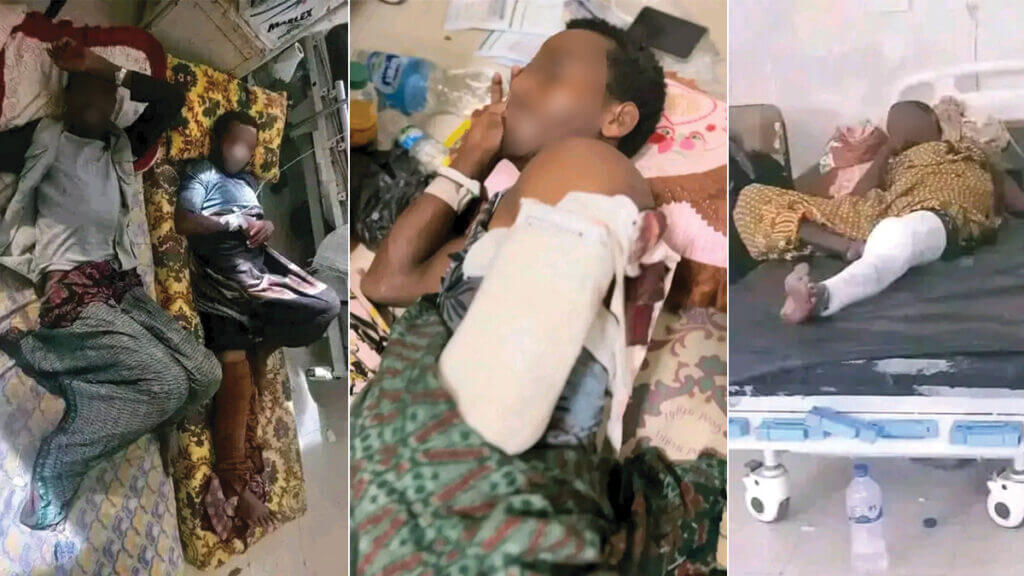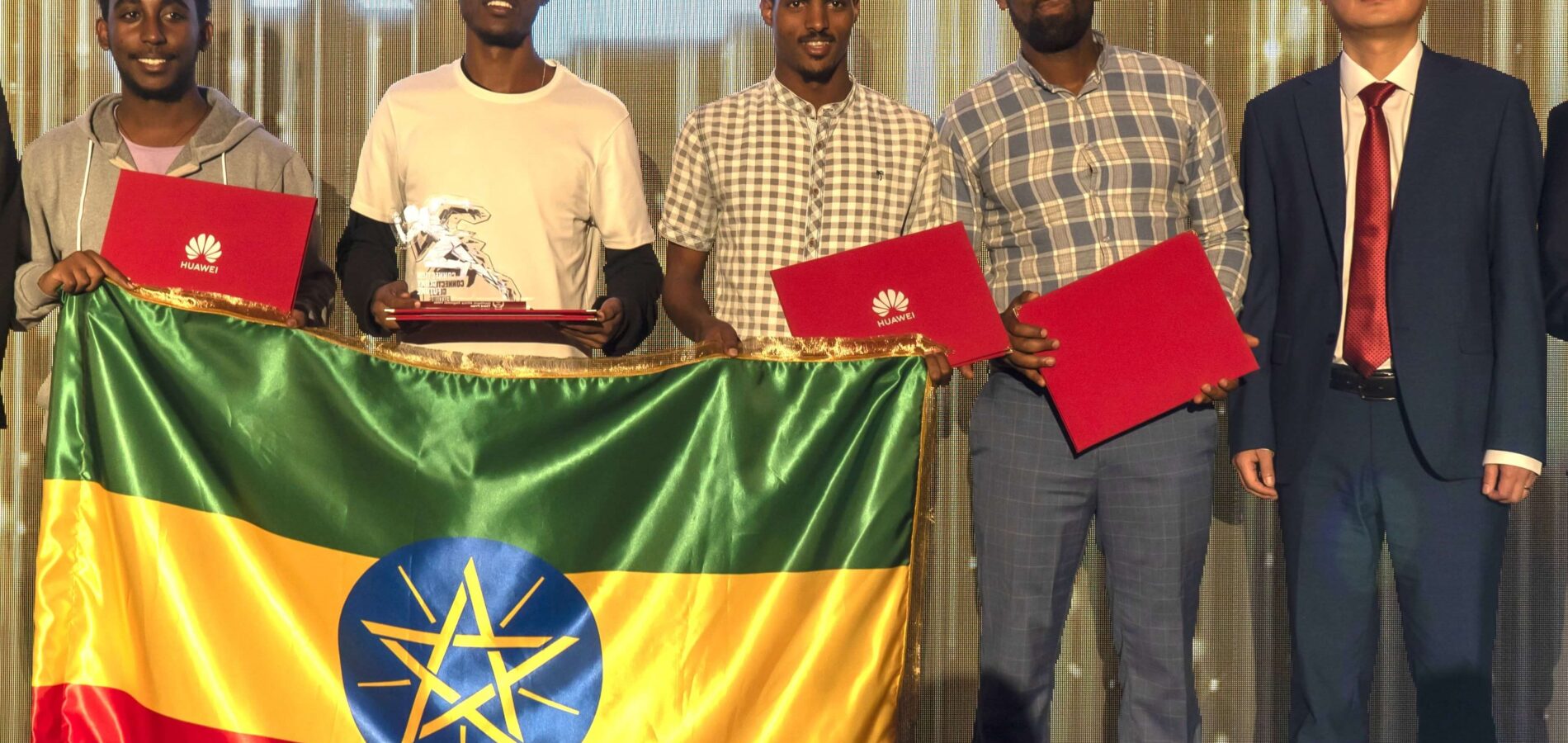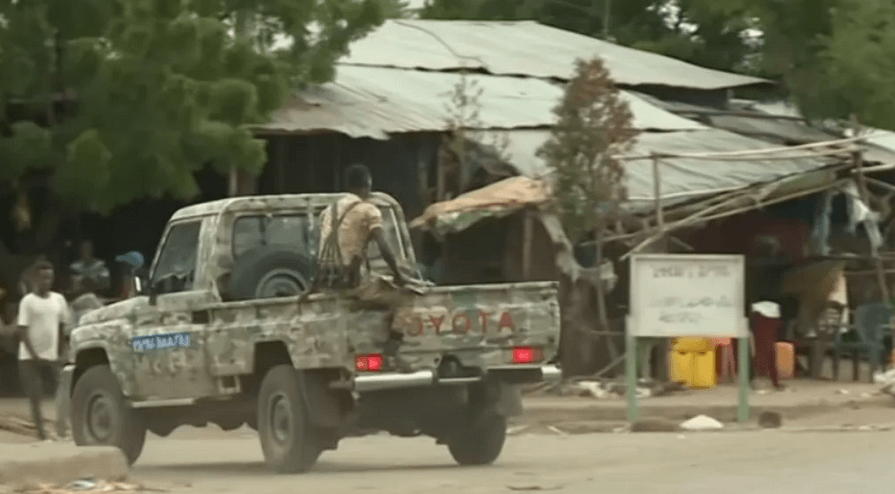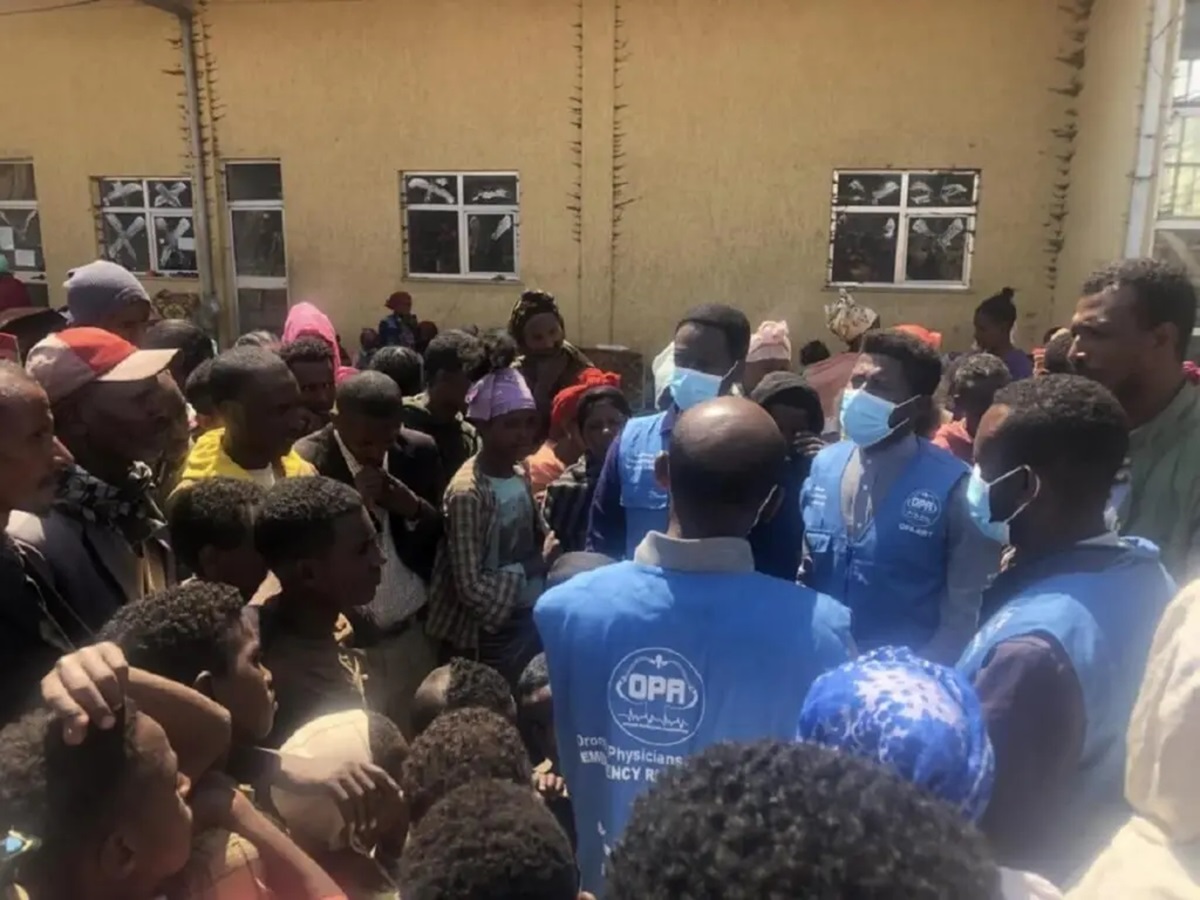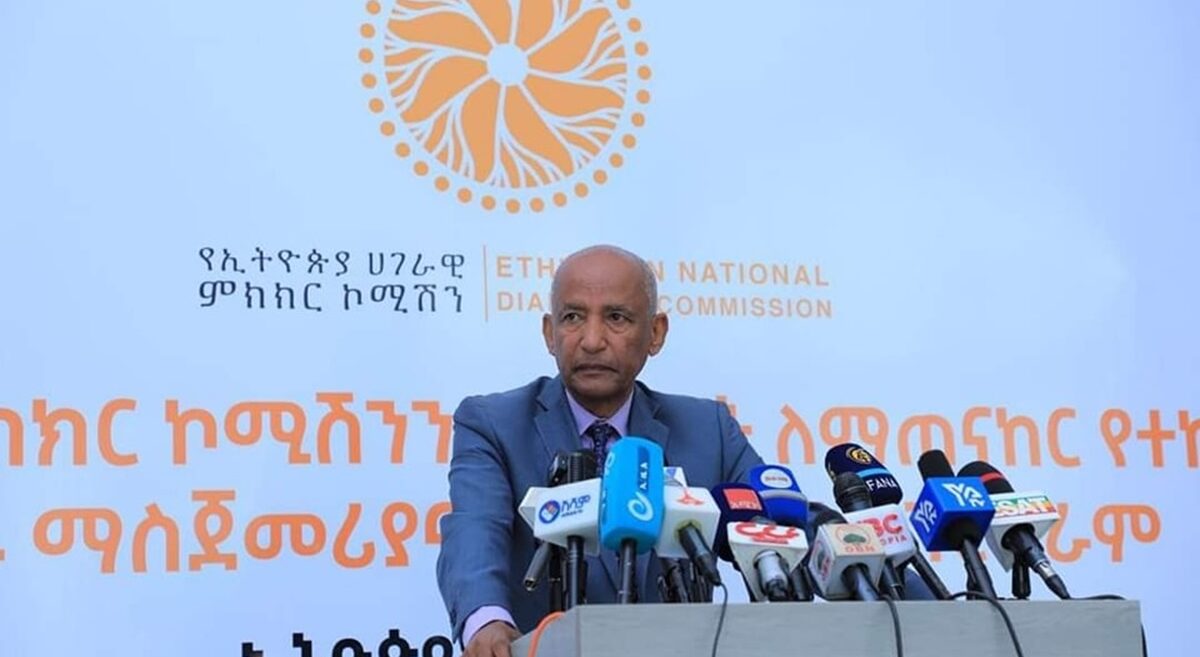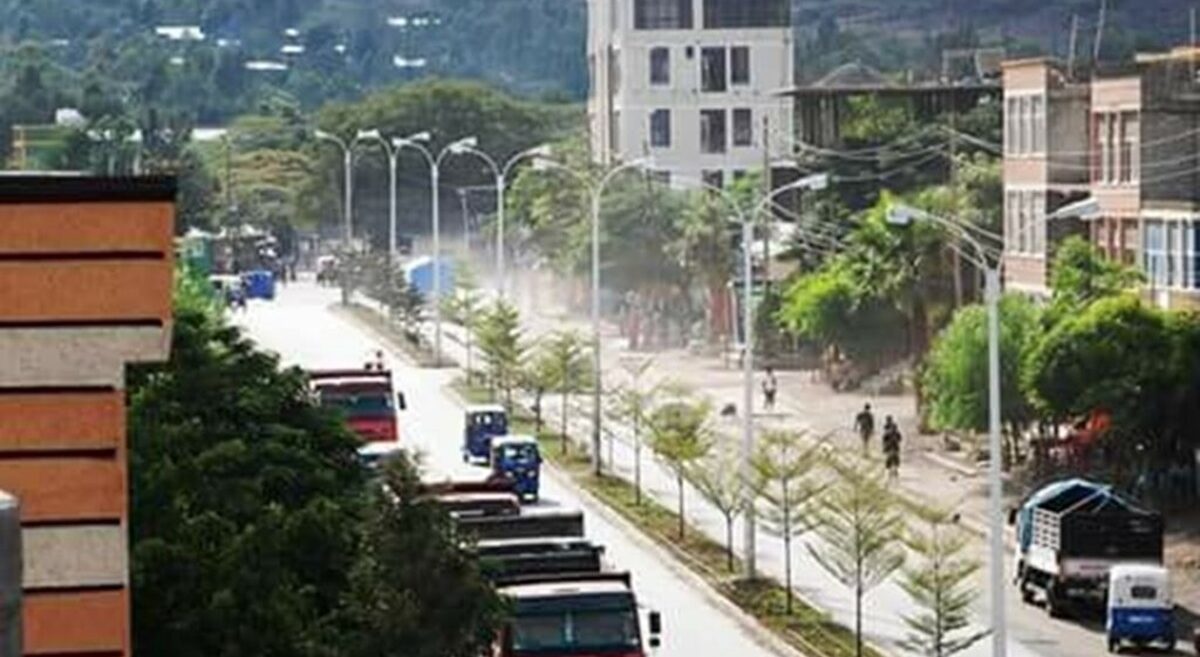Special Edition: Chronicles of Sidama people’s struggle for self rule

Please Click here to download the PDF version of this special edition
A brief political history of Sidama Nation for self-rule
Shiferaw Muleta (PhD), For Addis Standard
Addis Abeba, May 29/2030 – The quest of Sidama statehood has become a point of discussion in the political arena of Ethiopia. Notwithstanding to its long political and military struggle for self-rule, many people in the capital city Addis Abeba, including prominent politicians and academicians, think that the Sidamas’ quest for self-rule is a recent phenomenon and presented after Abiy Ahmed (PhD) came to power. For instance, many people have not heard about the armed struggle of the Sidamas against the Derg regime, which was “one of the top secrets of the Derg regime” (Human Rights Watch, 1991:86). The armed struggle of the Sidama Liberation Movement (SLM) for self-rule was one of the top five armed struggles launched by the EPLF, TPLF, OLF and ONLF against the Socialist-Dictatorship of the Derg regime. The SLM was active in its armed struggle for over a decade and the Sidamas sacrificed more than 10,000 men in different battle fields in Sidama region. In recent past, for example, a similar quest for statehood was presented by the Sidama zone council in September 2005. However, the response was a political one not a constitutional by then. Many Sidama elites and scholars were imprisoned and forced to exile for not accepting this political “decision”.
In this short essay, I present some historical events in the political struggle of the Sidama Nation for self-rule in a chronological order. The facts are compiled from local and international sources. However, I admit that this is not a complete chronological list. The aim of this essay is twofold: to acquaint readers with the political history of the Sidamas for self-rule and to initiate historians and young academics to conduct a thorough study in the armed struggle of the Sidamas. Hence, I believe this essay to serve as a stepping stone to document historical events in this regard. The dates are in Gregorian calendar for events from international sources, such as the Human Rights Watch reports. For some events, Ethiopian dates are included in brackets. The chronological lists are presented under four sections: Prior to Italian occupation, Haile Selassie I regime, Derg regime and post 1991.
I) The political Struggle of the Sidama Nation before 1941
- 1891: Sidama land was annexed by the army of Menelik II of Shoa. Despite their strong resistance, the Sidamas were conquered due to superiority in firearms by the invading army.
- 1900-1936: the armed resistance against the invading army continued, even though the struggles were in a fragmented way and not well coordinated. The early resistances were led by clan leaders such as Baallicha Worawo, Dullacha Raacho, Cuuko Daalachaanna, Aliito Hewano, Mangistu Hammeeso and Wena Hankarso.
- 1936-1941: During this Italian occupation period, the Sidama Nation relatively regained ownership on the ancestral land. The Nation was freed from servitude and the notorious ‘gabbar’ system during the Italian occupation period. Nonetheless, on some parts of the Sidama land, the Italians faced strong resistance due to their policy of discrimination. A prominent figure in the resistance against the Italian rule was Alito Hewano. The Italians responded by indiscriminately killing clan leaders and elders, which is still referred as Umi Shibbire (The First Terror) in Sidama land.
- II) The political Struggle of the Sidama Nation between 1941-1974
- 05 May 1941: Emperor Haile Selassie returned to Ethiopia from his exile and marked the restoration of Ethiopian independence from Italian occupation.
- 1941: Following the restoration of the Emperor to his throne, the conflict between the Sidamas and the ‘Melkegnas’ continued. In 1933 EC, Sidama elders and clan leaders were once again killed en mass in a place called Ashisho, 25 Kms from the current Aleta Wondo town, for resisting the returnee landlords. This event is still remembered as Layinki shibbire (the second terror) in Sidama land.
- 1940s-1974: the struggle continued with the returnee landlords who unfoundedly claimed to regain their “land”. However, the struggle was on individual basis and lacked coordination. Prominent individuals in the armed struggle against the returnee landlords during this period and then after include Yettera Boolle, Hushula Xaaddiso, Fiissa Ficho, Laanqamo Naare, Takilu Yota, Shila Harqa and Gebrehiwot Banata, just to mention few. As a result of the continued resistance, the Imperial regime was forced to make some reforms in its administrative system with a precondition of conversion of the Sidamas to Orthodox Christianity and accepting the language and culture of the ruling class. This assimilation policy had continued until 1991.
III) The political Struggle of the Sidama Nation between 1974-1991
- September 1974: the last king of the “Solomonic” dynasty was overthrown.
- March 1975: Declaration of Land to the Tiller policy
- 1974-1976: mixed form of support to and resistance against the Derg regime continued. The support was due to the Derg’s popular decree of Land to the Tiller. Like in many parts of the country, the Sidama elites and youths by the then were organized under the then prominent political groups, partly with the EPRP and significantly with MEISON.
- January 1977: The Sidama Liberation Movement (SLM) was established and the late Woldeamanuel Dubale became the first president of the movement
- June 1978-January 1980: A total of 60,000 Sidamas went to Somalia in five rounds to get military trainings. In the first four rounds, the journey of the SLM recruits was successful. However, there was a heavy causality in the fifth round.
- 18 January 1980 (ጥር 10/1972)፡ On their way to the training camp of the SLM in Somalia, Sidama recruits were caught in a surprise air attack by the Derg at a place called Galbed at the Ethio-Somalia border. Out of the total 12,000 recruits who left Sidama for Somalia, 2,000 died by the air strike and 600 went missing. Only 9,000 of them reached their destination.
- 1977-1987: The armed struggle spearheaded by the SLM continued. During this period, the SLM coordinated its armed struggle with the other fronts, such as the Oromo Liberation Front (OLF). The SLM continued its armed struggle against the Derg regime. It was successful in liberating many Sidama areas. The total causalities in the SLM side are estimated to be above 12,000(without including civilian losses) in its fight against the Derg regime for a decade.
- 1981: The Human Rights Watch report states that “the SLM was more active, largely in response to pre-emptive government counter-insurgency policies”. The HRW also stated that “The war in Sidama in 1981 was one of the Dergue’s best-kept secrets (HRW, 1991: 85). See the details from this link.
- January 1981: 200 people were reported to have been killed by an army patrol at Godaboke Mito and Chire villages in Sidama. “The war in Sidamo in 1981 was one of the Derg’s best-kept secrets. In January, 200 people were reported killed by an army patrol at Godaboke Mito and Chire villages in Sidamo.” HRW, P. 85
- 19-21 March 1981: The Derg bombarded the base of SLM in Chiirii woreda. The aim was to suffocate the army of the SLM within a forested valley. The HRW reported that helicopter and airplane attacks at Gata Warrancha in Sidama caused at least 20,000 people in one valley to flee, and more than 2,000 were reported killed when a “wall of flames” was ignited by bombing using either phosphorous or ethylene. The government ordered the evacuation of a Norwegian mission stationed in the area and a hospital [in Yirgalem], leaving the wounded without medical care.
- July 1981: 615 civilians were reported to have been killed at a meeting called by local administrators at a place known as Alo in Haroressa woreda.
- 01 December 1981: A well-documented killing took place in Chiiri (South Sidama) when a defense squad killed at least 48 people, including several cases involving entire families.
- 13 July 1980 (03/11/1972 ዓ/ም): The Derg army stationed in Malga woreda, in a specific place called Wotera Resa, 25 KMs from the capital Hawassa, was attacked by the SLM fighters. In a pretext of crushing the forces of the SLM, the military fired a machine gun on civilians who were attending a meeting summoned by local officials resulting in heavy civilian casualties.
- 18 July 1980 (08/11/1972 ዓ/ም): The Derg used heavy artilleries, including tanks, against civilians who were summoned for a meeting with local officials at the Market place of Yirba in Boricha district. When the civilians refused to comply with the demands of the officials and some of them started firing, the local officials reported to the nearby army camp as if they were encircled by heavily armed SLM fighters, the military massacred many civilians.
- 1988-1991: Notwithstanding its strong resistance of the air bombardments and the heavy artilleries, the armed struggle continued. However, the SLM decided to slow down its resistance because this time the Derg applied an anti-guerrilla tactic by recruiting Sidamas forcefully to fight against the SLM army. This tactic worked against the SLM, even though similar tactics failed in the battle grounds in Eritrea and Tigrary. Even though the armed struggle became passive after the end of 1987, also partly due to the Derg’s tactic of dividing the SLM leadership, the armed struggle continued until 1991.
- 1989-1991: The Sidama Nation got its own administrative structure for the first time since 1891. The “Sidama Administrative Region” became one of the newly formed 24 administrative Regions and the five autonomous regions.
IV) The political Struggle of the Sidama Nation in post1991 period
- 28 May 1991: The EPRDF forces entered Addis Abeba.
- July 1991: The SLM was one of the participating political groups in the the “July conference” in 1991. On its first day of meeting, the late chairman of TPLF, the late Meles Zenawi and the late Woldeamanuel Dubale exchanged a hot debate on the Sidama issue; the latter was supported by the OLF. This marked the beginning of hostility towards the SLM.
- 1991-1993: The SLM was represented by two individuals in the transitional council.
- 1993-1995: The Sidama Nation regained a self-administrative status (Region 8) out of the newly formed 14 regions at the national level.
- 07 December 1992 (ህዳር 29/1984): An attempt was made on the life of the late Woldeamanuel Dubale in a broad daylight. This incident happened on the first general assembly meeting of the SLM held in Hawassa.
- June 1992: The SLM was forced to withdraw from the transitional council.
- September 1992: The leadership of the SLM were forced into exile.
- 01 November 1991 (ጥቅምት 23/1984 ዓ/ም): The Sidama Peoples’ Democratic Organization (SPDO) was established as a surrogate Sidama organization to replace the SLM. Like the other PDOs (such as the creation of OPDO to replace OLF), this move by TPLF was to counter against the independent SLM. The political struggle of the SLM with the EPRDF continued.
- 18 August 1993 (ነሃሴ 10/1985 ዓ/ም): Sidamu Afoo became the working language and medium of instruction. Due to its historical significance, this date is still commemorated by the Sidamas annually.
- 1993-2005: The armed struggle continued by another Sidama organization called the Sidama National Front (SLF). The SLF was a splitter from the SLM due to differences in the struggle tactics against the EPRDF regime.
- Since 1993: Some of the SLM members decided to continue their struggle within the country peacefully despite the intimidation of the EPRDF regime. Many members of the peaceful SLM party were either killed or detained in the pretext of their “collaboration with the SLF”. Many Sidama elites were also forced to exile.
- January1993: The formation of the infamous SNNP region by merging five regions out of the 14 regions, which existed during the transition period. This move was objected by Sidama representatives within EPRDF, which forced many of the SPDO members to withdraw from the party and to continue their struggle from abroad. Prominent figures in this regard include Tufa Doyicha, the zonal president by then and others (e.g. Elias Tiro, and Tesfaye Fichola.)
- January 1993: the formation of the South Ethiopian People’s Democratic Movement (SEPDM) by merging all the PDOs in the newly formed South region. This diminished the political participation of Sidamas.
- July 2000: Many of the SLF and OLF fighting units were ambushed by the regime’s force in a battle ground fought in a place called Baidewa, Somalia. The Sidama and Oromo martyrs were buried together.
- 22 August 2005: The Council of Sidama unanimously endorsed the age long request of Sidama Nation for statehood. However, the response was political rather than constitutional. Many Sidama scholars, who were at the forefront in this constitutional quest for statehood, were either detained or forced into exile.
- 24 May 2002: The killing of more than 70 Sidama youth, children and women, who went out for a demonstration against the regime, by security forces. This tragic event is remembered as “the Loqqe Massacre” by the Sidama Nation. No one has been held accountable for this massacre.
- October 2007: The formation of the South Ethiopian People’s Democratic Front (SEPDF) by dismantling all independently acting PDOs in their respective zones. This completely undermined the political participation of the Sidama as an independent entity.
- 1995-2010: The political struggle, mainly by Sidama Political groups abroad, continued.
- On 24 April 2018: The Sidama representative in the council of the EPRDF voted for PM Abiy Ahmed instead of his Sidama competitor for the chairmanship position of the EPRDF and subsequently the Prime Minster position. This independent move of the Sidama members within the EPRDF council has earmarked a new chapter in Oromo-Sidama relationship in the political arena.
- 18 July 2018 (ሐምሌ 11/2010 ዓ/ም): The Council of Sidama Zone unanimously endorsed the quest for statehood for a second time.
- 03 November 2018 (23/02/2011 ዓ/ም): The Council of SNNP region unanimously approved the Sidamas Zone’s request for statehood
- 22 November 2018 (12/03/2011 ዓ/ም): The House speaker of the SNNP council officially requested the National Electoral Board of Ethiopia (NEBE) to conduct a referendum for Sidama Nation as per Article 47 (3) of the constitution.
- Since 22 November 2018: The Sidama Zone has been waiting for the action of the NEBE to conduct a referendum, while the necessary preparations to form its independent region, the Sidama National Regional State (SNRS), has been finalized.
- 23 January 2019 (13/01/2011ዓ/ም): The Taskforce, drawn from Sidama scholars, was established by Sidama zone council to make the necessary preparations for the new region. The Taskforce has already completed its tasks. A public discussion on the new regional constitution is expected to commence soon.
- 20 March 2019 (14/06/2011 ዓ/ም): More than a million people held a peaceful demonstration in Hawassa city protesting the delay of announcing the referendum date.
- 13-15 March 2019 (መጋቢት 5-7 2011 ዓ/ም): As an extension of the first demonstration, the second demonstration (Gaado II) was conducted as stay-at-home protest for three days.
- 09 April 2019 (01/07/2011 ዓ/ም): A peaceful demonstration by women and girls only, referred as Yaakissa, was held in Hawassa city over the delay of the referendum date.
Editor’s Note: Shiferaw Muleta (PhD) is from Addis Abeba University (AAU) College of Development Studies. He can be reached at shiferaw.muleta@aau.edu.et
_________________________________________//___________________________________
References
Human Rights Watch (1991). Evil Days: 30 Years of War and Famine in Ethiopia, p. 85
Wolassa L. Kumo. (2016). The Sidama Nation: History, Culture and Political Economy. Create Space Independent Publishing, North Charleston, USA
John Markakis, 2011: Ethiopia: The Last Two Frontiers, Oxford, James Currey.
Markakis wrote that after 1977, the SLM “established an armed presence in three woreda[s] … and managed to fight off the Derg until 1982..”(Markakis 2011, 200)
የሲዳማ ዞን ባህል፣ ቱሪዝምና የመንግስት ኮሚኒኬሽን ጉዳዮች መምሪያ (2003 ዓ/ም). የሲዳማ ብሔር ታሪክና ባህል. (The Sidama Nation: History and Culture) pp:64-86 and 96-128
አበበ ማሪሞ. (2011 ዓ/ም). የሲዳማ አርነት ንቅናቄ የትጥቅ ትግል ታሪክ፡ ከ1970-1983 ዓ.ም. MA printing. (The Sidama Liberation Movement: History of Armed Struggle, 1978-1991 G.C), pp: 82-85 and 100-102, 111-128.


